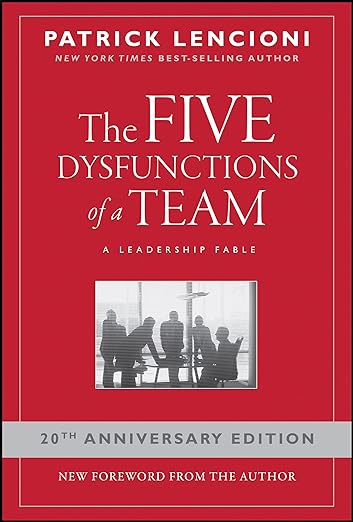“The Five Dysfunctions of a Team” by Patrick Lencioni
Who is it for? for those looking to improve their team’s performance
Patrick Lencioni’s “The Five Dysfunctions of a Team” is a pivotal book in the realm of organisational development and team management. Presented in a fable format, it is both engaging and illuminating, dissecting the common pitfalls that hinder team success in corporate environments.
Lencioni identifies the five core dysfunctions that teams often struggle with: absence of trust, fear of conflict, lack of commitment, avoidance of accountability, and inattention to results. Each dysfunction builds upon the previous one, creating a comprehensive model that enables leaders and team members to diagnose and address their team’s shortcomings. The narrative style of the book, centred around a fictional but relatable company, makes these concepts accessible and vivid.
The key challenge for readers, particularly team leaders and managers, is the practical implementation of Lencioni’s framework in their own teams. Recognizing and admitting to these dysfunctions requires a level of self-awareness and vulnerability that many may find difficult. The first step, building trust within a team, is often the hardest, as it demands openness and the dismantling of protective barriers that professionals commonly build.
Furthermore, transforming theory into action within diverse and complex team dynamics can be a daunting task. The dysfunctions model requires consistent and ongoing effort to counteract, and in real-world scenarios, conflicts and resistance are inevitable. Navigating these with sensitivity while maintaining focus on the team’s collective goals is a delicate balance.
Despite these challenges, “The Five Dysfunctions of a Team” remains an essential read for anyone looking to improve their team’s performance. It offers not just a diagnosis of common issues but also provides practical solutions and tools for building stronger, more cohesive team.
In conclusion, Lencioni’s book is a valuable resource for understanding and improving team dynamics. However, the real test for readers is translating these insights into tangible changes within their teams. For those ready to embark on this challenging but rewarding journey, the book is an excellent guide towards creating more effective, harmonious, and successful teams.

